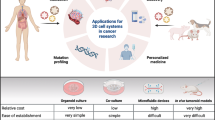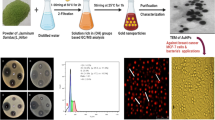Abstract
Hyperthermia treatment can induce component changes on cell. This study explored the potential of Z-scan to improve accuracy in the identification of subtle differences in mouse colon cancer cell line CT26 during hyperthermia treatment. Twenty-one samples were subjected individually to treatment of hyperthermia at 41, 43, and 45 °C. Each hyperthermia treatment was done in six different time (15, 30, 45, 60, 75, and 90 min). Two optical setups were used to investigate the linear and nonlinear optical behavior of samples. Prior to the Z-scan technique, all samples were fixed with 1 mL of 5% paraformaldehyde. The linear optical setup indicated that extinction coefficient cannot monitor cell changes at different treatment regimes. But the nonlinear behavior of CT26 in all hyperthermia treatment regimens was different. By increasing the time and/or temperature of hyperthermia treatments, change in the sign of nonlinear refractive index from negative to positive occurred in earlier time intervals. This phenomenon was seen for 41, 43, and 45 °C in 75, 60, and 45 min, respectively. The results showed that the Z-scan technique is a reliable method with the potential to characterize cell changes during hyperthermia treatment regimes. Nonlinear refractive index can be used as a new index for evaluation of cell damage.





Similar content being viewed by others
References
Siegel RL, Miller KD, Jemal A (2016) Cancer statistics, 2016. CA Cancer J Clin 66:7–30. https://doi.org/10.3322/caac.21332
Beik J, Abed Z, Ghoreishi FS, Hosseini-Nami S, Mehrzadi S, Shakeri-Zadeh A, Kamrava SK (2016) Nanotechnology in hyperthermia cancer therapy: from fundamental principles to advanced applications. J Control Release 235:205–221. https://doi.org/10.1016/j.jconrel.2016.05.062
Wust P, Hildebrandt B, Sreenivasa G, Rau B, Gellermann J, Riess H, Felix R, Schlag P (2002) Hyperthermia in combined treatment of cancer. Lancet Oncol 3:487–497. https://doi.org/10.1016/S1470-2045(02)00818-5
Horsman MR, Overgaard J (2007) Hyperthermia: a potent enhancer of radiotherapy. Clin Oncol 19:418–426. https://doi.org/10.1016/j.clon.2007.03.015
Kim J, Hahn E, Tokita N (1978) Combination hyperthermia and radiation therapy for cutaneous malignant melanoma. Cancer 41:2143–2148. https://doi.org/10.1002/1097-0142(197806)41:6%3C2143::AID-CNCR2820410610%3E3.0.CO;2-9
Rao W, Deng Z, Liu J (2009) A review of hyperthermia combined with radiotherapy/chemotherapy on malignant tumors. Crit Rev Biomed Eng 38:101–116. https://doi.org/10.1615/CritRevBiomedEng.v38.i1.80
Hehr T, Wust P, Bamberg M, Budach W (2003) Current and potential role of thermoradiotherapy for solid tumours. Oncol Res Treat 26:295–302. https://doi.org/10.1159/000071628
Baronzio GF, Hager ED (2008) Hyperthermia in cancer treatment: a primer. Springer Science & Business Media
Kerr JF, Winterford CM, Harmon BV (1994) Apoptosis. Its significance in cancer and cancer therapy. Cancer 73:2013–2026. https://doi.org/10.1002/1097-0142(19940415)73:8%3C2013::AID-CNCR2820730802%3E3.0.CO;2-J
Roti Roti JL (2008) Cellular responses to hyperthermia (40–46 C): cell killing and molecular events. Int J Hyperth 24:3–15. https://doi.org/10.1080/02656730701769841
Mantso T, Goussetis G, Franco R, Botaitis S, Pappa A, Panayiotidis M (2016) Effects of hyperthermia as a mitigation strategy in DNA damage-based cancer therapies. Semin Cancer Biol 37–38(Supplement C):96–105. https://doi.org/10.1016/j.semcancer.2016.03.004
Moussavi M, Haddad F, Matin M, Iranshahi M, Rassouli F (2018) Efficacy of hyperthermia in human colon adenocarcinoma cells is improved by auraptene. Biochem Cell Biol 96:32–37. https://doi.org/10.1139/bcb-2017-0146
van den Tempel N, Laffeber C, Odijk H, van Cappellen WA, van Rhoon GC, Franckena M, Kanaar R (2017) The effect of thermal dose on hyperthermia-mediated inhibition of DNA repair through homologous recombination. Oncotarget 8:44593–44604. https://doi.org/10.18632/oncotarget.17861
Gomaa IE, Gaber SAA, Bhatt S, Liehr T, Glei M, El-Tayeb TA, Abdel-Kader MH (2015) In vitro cytotoxicity and genotoxicity studies of gold nanoparticles-mediated photo-thermal therapy versus 5-fluorouracil. J Nanopart Res 2:1–11. https://doi.org/10.1007/s1105
Nemani KV, Ennis RC, Griswold KE, Gimi B (2015) Magnetic nanoparticle hyperthermia induced cytosine deaminase expression in microencapsulated E. coli for enzyme–prodrug therapy. J Biotechnol 203(Supplement C):32–40. https://doi.org/10.1016/j.jbiotec.2015.03.008
Nakagawa Y, Kajihara A, Takahashi A, Murata AS, Matsubayashi M, Ito SS, Ota I, Nakagawa T, Hasegawa M, Kirita T (2018) BRCA2 protects mammalian cells from heat shock. Int J Hyperth 34:795–801. https://doi.org/10.1080/02656736.2017.1370558
Ghader A, Ardakani AA, Ghaznavi H, Shakeri-Zadeh A, Minaei SE, Mohajer S, Ara MHM (2018) Evaluation of nonlinear optical differences between breast cancer cell lines SK-BR-3 and MCF-7; an in vitro study. Photodiagn Photodyn Ther 23:171–175. https://doi.org/10.1016/j.pdpdt.2018.06.015
Abbasian Ardakani A, Rajaee J, Khoei S (2017) Diagnosis of human prostate carcinoma cancer stem cells enriched from DU145 cell lines changes with microscopic texture analysis in radiation and hyperthermia treatment using run-length matrix. Int J Radiat Biol 93:1248–1256. https://doi.org/10.1080/09553002.2017.1359429
Park J, Hwang M, Choi B, Jeong H, Jung JH, Kim HK, Hong S, Park JH (2017) Exosome classification by pattern analysis of surface-enhanced Raman spectroscopy data for lung cancer diagnosis. Anal Chem 89:6695–6701. https://doi.org/10.1021/acs.analchem.7b00911
Sheik-Bahae M, Said AA, Wei T-H, Hagan DJ, Van Stryland EW (1990) Sensitive measurement of optical nonlinearities using a single beam. IEEE J Quantum Electron 26:760–769. https://doi.org/10.1109/3.53394
Ghader A, Majles Ara MH, Mohajer S, Divsalar A (2018) Investigation of nonlinear optical behavior of creatinine for measuring its concentration in blood plasma. Optik 158:231–236. https://doi.org/10.1016/j.ijleo.2017.12.063
de Queiroz Mello AP, Albattarni G, Espinosa DHG, Reis D, Neto AMF (2018) Structural and nonlinear optical characteristics of in vitro glycation of human low-density lipoprotein, as a function of time. Braz J Phys 48(6):560–570. https://doi.org/10.1007/s13538-018-0600-x
Hosseinzadeh M, Salmani S, Majles Ara M, Mohajer S (2018) The simple optical methods for early diagnosis of selected benign and malignant brain tumors of human. J of Nonlinear Optical Phys & Materials 27(03):1850033. https://doi.org/10.1142/S0218863518500339
Salman M, Hosein MAM, Mohammad N (2016) Nonlinear optical investigation of normal ovarian cells of animal and cancerous ovarian cells of human in-vitro. Optik 127:3867–3870. https://doi.org/10.1016/j.ijleo.2016.01.072
Mohajer S, Ara MHM, Serahatjoo L (2016) Effects of graphene quantum dots on linear and nonlinear optical behavior of malignant ovarian cells. J of Nanophotonics 10:036014. https://doi.org/10.1117/1.JNP.10.036014
Warters RL, Henle KJ (1982) DNA degradation in Chinese hamster ovary cells after exposure to hyperthermia. Cancer Res 42:4427–4432
Laszlo A (1988) Evidence for two states of thermotolerance in mammalian cells. Int Hyperth 4:513–526. https://doi.org/10.3109/02656738809027695
Anai H, Maehara Y, Sugimachi K (1988) In situ nick translation method reveals DNA strand scission in HeLa cells following heat treatment. Cancer Lett 40:33–38. https://doi.org/10.1016/0304-3835(88)90259-5
Sellins KS, Cohen JJ (1991) Hyperthermia induces apoptosis in thymocytes. Radiat Res 126:88–95. https://doi.org/10.2307/3578175
Takano YS, Harmon BV, Kerr JF (1991) Apoptosis induced by mild hyperthermia in human and murine tumour cell lines: a study using electron microscopy and DNA gel electrophoresis. J Pathol 163:329–336. https://doi.org/10.1002/path.1711630410
Yonezawa M, Otsuka T, Matsui N, Tsuji H, Kato KH, Moriyama A, Kato T (1996) Hyperthermia induces apoptosis in malignant fibrous histiocytoma cells in vitro. Int J Cancer 66:347–351. https://doi.org/10.1002/(SICI)1097-0215(19960503)66:3%3C347::AID-IJC14%3E3.0.CO;2-8
Cox A, DeWeerd AJ, Linden J (2002) An experiment to measure Mie and Rayleigh total scattering cross sections. Am J Phys 70:620–625. https://doi.org/10.1119/1.1466815
Tuchin VV (2007) Tissue optics: light scattering methods and instruments for medical diagnosis, vol 13. SPIE press, Bellingham
Maeda D, Iwai T, Namiki M (2018) Diffuse light reflectometry for measuring scattering and absorption coefficients of a biological tissue. In: Biomedical Imaging and Sensing Conference. Int Society for Optics and Photonics, p 107111L. https://doi.org/10.1117/12.2319355
Marshall WF, Young KD, Swaffer M, Wood E, Nurse P, Kimura A, Frankel J, Wallingford J, Walbot V, Qu X, Roeder AH (2012) What determines cell size? BMC Biol 10:101. https://doi.org/10.1186/1741-7007-10-101
Nishidate I, Mustari A, Kawauchi S, Sato S, Sato M, Kokubo Y (2017) In vivo imaging of tissue scattering parameter and cerebral hemodynamics in rat brain with a digital red-green-blue camera. SPIE BiOS Int Society for Opt and Photonics, 100500O-100508. https://doi.org/10.1117/12.2251109
Boyd RW (2008) Nonlinear opt. Academic Press
Behravan M, Salmani S, Kavianfar A, Gharibi A, Majles Ara M (2017) Early diagnosis by comparison between interferometry and Z-scan methods to measure NLO refraction of human skin cancer (BCC and SCC) in vitro. J Nonlinear Optical Phys Mater 26(03):1750033. https://doi.org/10.1142/S0218863517500333
Salman M, Hossein MAM, Kamran KS, Shayan M (2016) Optical discrimination of benign and malignant oral tissue using Z-scan technique. Photodiagn Photodyn Ther 16(Supplement C):54–59. https://doi.org/10.1016/j.pdpdt.2016.08.001
Author information
Authors and Affiliations
Corresponding authors
Ethics declarations
Conflict of interest
The authors declare that they have no conflict of interest.
Additional information
Publisher’s note
Springer Nature remains neutral with regard to jurisdictional claims in published maps and institutional affiliations.
Rights and permissions
About this article
Cite this article
Ghader, A., Gazestani, A.M., Minaei, S.E. et al. Evaluation of nonlinear optical behavior of mouse colon cancer cell line CT26 in hyperthermia treatment. Lasers Med Sci 34, 1627–1635 (2019). https://doi.org/10.1007/s10103-019-02759-8
Received:
Accepted:
Published:
Issue Date:
DOI: https://doi.org/10.1007/s10103-019-02759-8




